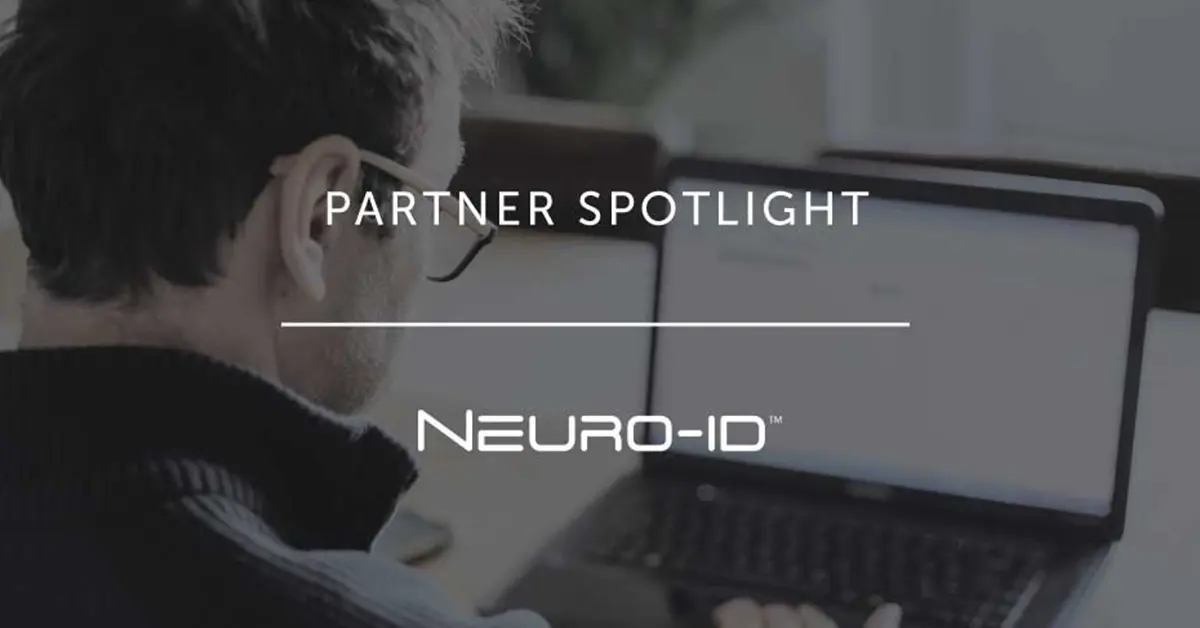In this Partner Spotlight, we’re focusing on Neuro-ID, a leading provider of prescriptive analytics solutions. James Craddick, Director of Business Development sat down to talk with us about trends in digital applications and share information about Neuro-ID and their solution.

How long have you been in partnership with Zoot?
We have been a partner of Zoot for a little over a year now.
What specific issues does Neuro-ID address?
We focus on intelligently screening and mitigating risk within digital new account applications without the need to collect or retain PII. We provide new insight into an applicant’s “digital body language” when it comes to customer problem areas like fraud and loan quality.
Where does Neuro-ID ideally fit into a fraud prevention strategy for financial institutions?
When looking at fraud risk specifically, there are certain applicant behaviors that can be seen as suspicious, especially around Synthetic Identity fraud. How someone interacts within the digital application can tell a unique story.
For instance, a fraudster may exhibit low data familiarity when filling in fields related to identity. There may be application fields that are pre-filled, or there may be discrepancies in how data is being input into the application. Seeing those discrepancies, and creating a score to quantify whether they represent potentially fraudulent applications, is where we fit.
When our signals, captured in that application process, are integrated into a multi-layered fraud strategy, lenders will be able to cast a wider net and catch fraud that can typically make it through traditional means.
What trends do you see, that Zoot clients should be thinking about?
We have really been seeing fintech lenders fully embracing digital channels, causing traditional lenders to reconsider and invest in their digital strategies. This is also being driven by a society that is very digitally focused and has certain expectations.
However, these digital channels can represent risk for FIs when it comes to new applicants. Are the new applicants legitimate? Are they fraudsters? It is important for FIs to understand applicants as holistically as possible, so that they are providing the right customer experience while balancing risk appropriately.
I really look at this as balancing risk and friction to ensure FIs are able to more fully embrace the digital channels. With the right set of tools in place, FIs can get a much clearer picture of who a digital applicant really is. Those same tools will help shine light on the level of risk any particular applicant represents, without increasing friction for the individual applying. Using tools like Neuro-ID will help promote socially responsible banking and reach those consumers who are underserved or underbanked.
Anything else you’d like to share?
I would like to expand on digital body language and why it provides unique signals to intelligently screen and mitigate risk. As mentioned previously, the current move from branch to digital channels leaves the customer interaction a bit of an unknown for FIs, and really any institution conducting business in the digital channel.
When you look closely at how someone interacts with application and compare it to their real time baselined behavior, there are unique signals that can highlight anomalous behavior. This anomalous behavior is typically associated with the context of the question or interaction.
For example, reactions to income-related questions would give insight into the likelihood that someone is being deceptive about their stated income. Uncertainty around identity information could be indicative of third party fraud, including synthetic identity fraud.
On the flip side, high degrees of certainty around financial or other information can be used to identify candidates for fast-tracking. Our technology is able to pick up on these behaviors in real-time and allows you to make better decisions about how to take action.
What is the main benefit that Zoot clients will see when they integrate with Neuro-ID’s solution?
The main benefit will be a transparent view of our unique signals captured during the digital application process. Joint clients will receive real-time, actionable confidence scores through our flexible API. Financial institutions (FIs) that use Zoot’s decisioning platform can integrate Neuro-ID into their decisioning and underwriting process to detect and prevent fraud, without an overt increase in customer friction.
Let’s talk solutions. How does your prescriptive analytics solution work?
We take a multi-step approach that we refer to as the “road to prescriptive analytics.” We first start by revealing the digital body language for our customers, focusing on what is currently happening in their digital form.
We then identify the areas where our customers are looking for further insight, and produce prescriptive models. The whole process provides value by understanding what is happening and being able act on it in real-time.
What makes your solution unique?
Our solution is unique because of the underlying scientific research behind our services. Our co-founders are two world-renowned researchers that have focused their studies on where HCI, or Human Computer Interaction, meets Behavioral Neuro-Science.
We not only identify digital body language, but we can interpret it as well. This produces a unique signal as compared to Behavioral Biometrics or Behavioral Analytics, and it is what we call Neuro-Behavioral Analytics.
What problems can prescriptive analytics solve for Zoot’s clients?
Working with our customers, we are able to show new insight into risk within digital channels. We say it is a new dimension of analytics, and our results are showing substantial and meaningful unique variance when compared against both internal and external risk scores. Additionally, with the meaningful unique variance we are seeing, we would complement any multi-layer risk strategy with very little redundancy to existing scores and signals.
Who is a good fit for your solutions?
Due to the nature of our product, we focus on FIs who have digital channels with products that have more risk associated, i.e. personal loans, mortgages, auto loans, etc. However, the new insights that Neuro-ID produces on a descriptive level will assist any FIs searching for an additional understanding of applicants in their digital channels and actionable analytics for real-time decisioning.
Conclusion
A big thank you to James Craddick, Director of Business Development from Neuro-ID for this look at the applications and implications of prescriptive analytics. For more information about additional products and services from this partner, please visit http://neuro-id.com/




